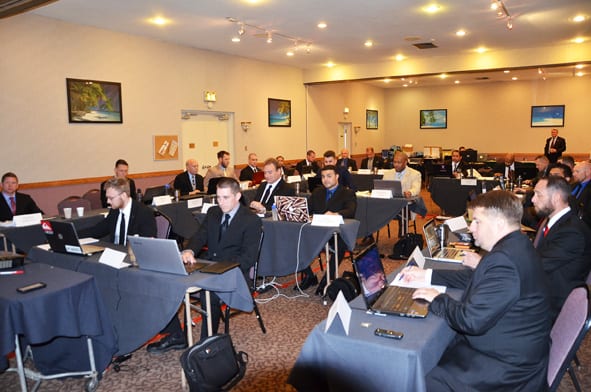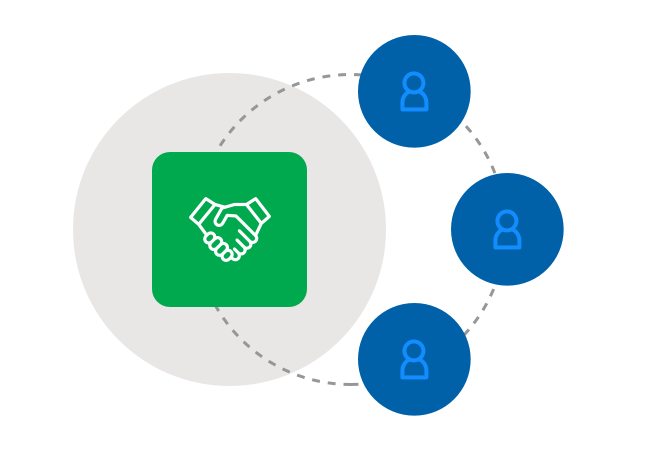Grasping Corporate Security: Proven Methods for Organization Defense
Grasping Corporate Security: Proven Methods for Organization Defense
Blog Article
From Cybersecurity to Physical Measures: Strengthening Business Safety in a Changing Globe
By combining the strengths of both cybersecurity and physical safety, companies can create a thorough protection strategy that resolves the diverse range of dangers they encounter. In this conversation, we will discover the changing hazard landscape, the need to integrate cybersecurity and physical safety and security, the execution of multi-factor verification steps, the relevance of worker understanding and training, and the adaptation of safety measures for remote workforces. By taking a look at these vital locations, we will certainly gain beneficial understandings into how companies can reinforce their corporate security in an ever-changing world.
Understanding the Transforming Risk Landscape
The developing nature of the modern world requires a detailed understanding of the changing threat landscape for effective business protection. It is important for organizations to remain notified and adapt their safety determines to address these advancing risks.
One key element of understanding the changing danger landscape is acknowledging the different sorts of risks that organizations face. Cybercriminals are continuously establishing brand-new techniques to exploit vulnerabilities in computer systems and networks. These dangers can range from malware and ransomware assaults to phishing rip-offs and social design tactics. Furthermore, physical threats such as burglary, vandalism, and business espionage continue to be prevalent worries for services.
Monitoring and evaluating the threat landscape is vital in order to identify potential threats and susceptabilities. This includes staying upgraded on the current cybersecurity patterns, analyzing hazard knowledge reports, and conducting normal danger assessments. By understanding the transforming danger landscape, organizations can proactively apply proper safety steps to mitigate threats and secure their assets, credibility, and stakeholders.
Integrating Cybersecurity and Physical Safety And Security
Incorporating cybersecurity and physical safety is important for extensive corporate security in today's electronic and interconnected landscape. As organizations increasingly depend on innovation and interconnected systems, the borders between physical and cyber hazards are ending up being obscured. To efficiently guard against these dangers, an alternative method that combines both cybersecurity and physical safety measures is necessary.
Cybersecurity focuses on securing electronic assets, such as networks, data, and systems, from unapproved gain access to, disruption, and theft. Physical safety, on the various other hand, includes actions to secure physical possessions, individuals, and facilities from vulnerabilities and dangers. By incorporating these two domains, organizations can attend to susceptabilities and hazards from both physical and digital angles, thus improving their total protection posture.
The integration of these two self-controls permits an extra comprehensive understanding of safety and security dangers and makes it possible for a unified response to events. For instance, physical gain access to controls can be enhanced by incorporating them with cybersecurity protocols, such as two-factor verification or biometric identification. Cybersecurity steps can be complemented by physical security actions, such as security cams, alarms, and protected access factors.

Executing Multi-Factor Verification Actions
As organizations significantly prioritize extensive protection measures, one efficient strategy is the application of multi-factor verification steps. Multi-factor verification (MFA) is a security technique that needs customers to offer numerous kinds of identification to access a system or application. This technique adds an additional layer of defense by combining something the individual recognizes, such as a password, with something they have, like a security or a fingerprint token.
By executing MFA, organizations can dramatically boost their security position - corporate security. Conventional password-based authentication has its restrictions, as passwords can be quickly endangered or forgotten. MFA reduces these dangers by including an additional verification variable, making it harder for unauthorized individuals to get to delicate details
There are numerous sorts of multi-factor authentication techniques offered, including biometric authentication, SMS-based verification codes, and equipment symbols. Organizations require to assess their specific needs and pick one of the most proper MFA option for their requirements.
However, the implementation of MFA need to be meticulously intended and implemented. It is critical to strike an site web equilibrium between safety and usability to stop user disappointment and resistance. Organizations ought to also take into consideration possible compatibility problems and offer sufficient training and support to ensure a smooth change.
Enhancing Worker Awareness and Training
To enhance company safety and security, companies must prioritize improving worker recognition and training. Many safety and security breaches happen due to human mistake or absence of recognition.
Effective employee awareness and training programs must cover a vast array of topics, including data security, phishing assaults, social design, password health, and physical protection procedures. These programs should be customized to the particular demands and duties of various staff member duties within the company. Routine training simulations, sessions, and workshops can aid staff members establish the needed skills and understanding to react and determine to safety dangers properly.
In addition, companies need to motivate a society of safety and security awareness and give continuous updates and pointers to maintain workers informed regarding the most up to date threats and reduction strategies. This can be done via interior communication networks, such as newsletters, intranet websites, and email projects. By fostering a security-conscious labor force, organizations can significantly minimize the possibility of security occurrences and safeguard their beneficial possessions from unapproved gain access to or concession.

Adapting Safety And Security Actions for Remote Workforce
Adjusting company safety and security actions to accommodate a remote labor force is essential in guaranteeing the defense of sensitive info and assets (corporate security). With the raising trend of remote work, organizations need to apply proper protection actions to mitigate the risks related to this new way of working
One important element of adapting safety procedures for remote job is developing safe interaction channels. Encrypted messaging platforms and virtual private networks (VPNs) can assist secure delicate details and prevent unauthorized gain access to. In addition, companies should implement using strong passwords and multi-factor authentication to boost the safety and security of remote gain access to.
Another vital consideration click reference is the implementation of secure remote accessibility options. This includes providing staff members with protected accessibility to business resources and information with virtual desktop computer facilities (VDI), remote desktop methods (RDP), or cloud-based services. These technologies ensure that delicate information remains safeguarded while allowing workers to perform their duties successfully.

Lastly, detailed protection awareness training is essential for remote workers. Educating sessions must cover ideal techniques for securely accessing and handling sensitive info, recognizing and reporting phishing attempts, and maintaining the general cybersecurity hygiene.
Verdict
In conclusion, as the threat landscape proceeds to progress, it is essential for organizations to reinforce their safety determines both in the cyber and physical domains. Incorporating cybersecurity and physical safety, executing multi-factor authentication actions, and improving employee recognition and training are vital steps in the direction of achieving durable business safety and security.
In this conversation, we will check out the changing danger landscape, the need to incorporate cybersecurity and physical security, the application of multi-factor verification procedures, the importance of worker awareness and training, and the adaptation of protection steps for remote labor forces. Cybersecurity steps can be enhanced by physical safety and security actions, such as surveillance electronic cameras, alarms, and safe access factors.
As organizations significantly prioritize detailed safety measures, one effective strategy is the execution of multi-factor authentication measures.In final thought, as the danger landscape proceeds to evolve, it is critical for organizations to strengthen advice their safety gauges both in the cyber and physical domain names. Integrating cybersecurity and physical protection, implementing multi-factor authentication steps, and boosting staff member awareness and training are important steps towards accomplishing durable company protection.
Report this page